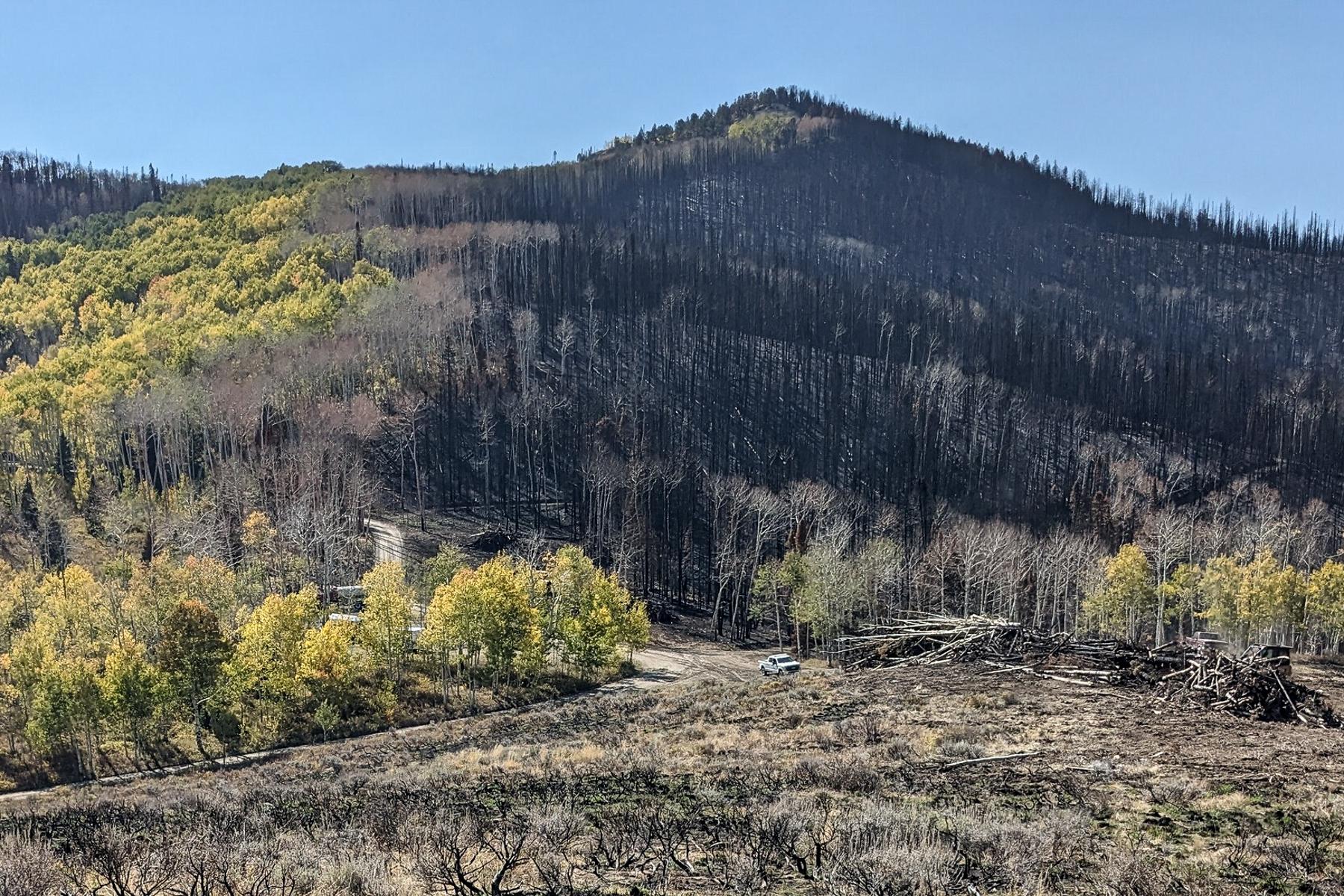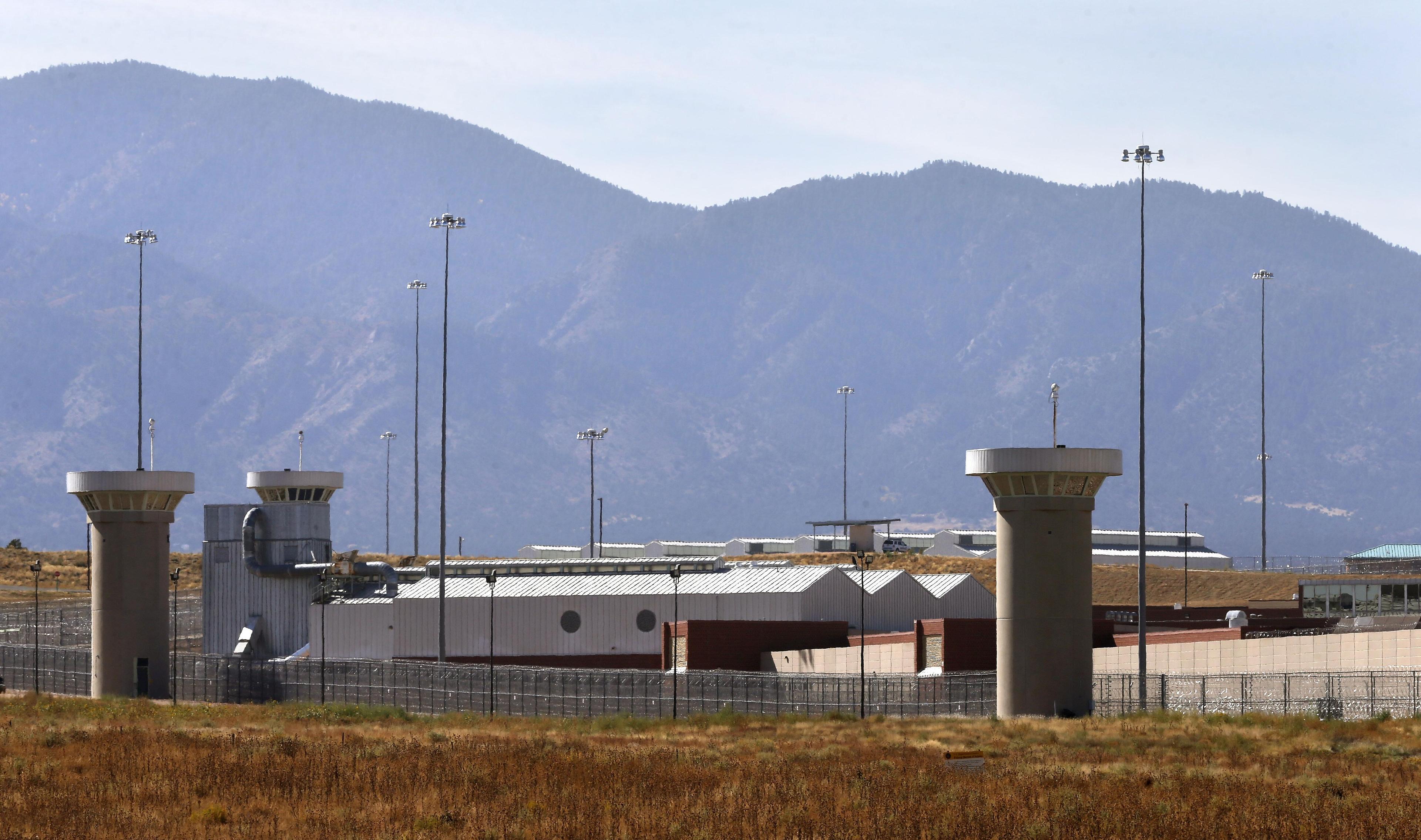
New research from Western Colorado University shows that the long-held conventional belief about aspen trees being resilient to wildfires is more than just an anecdotal assumption.
Matt Harris, a forest fire researcher at Western and lead-author of the study, says that two decades of data on fires across four states paints a clear picture that aspen trees have a natural resistance to fire that could serve land managers thinking about future burns.
“We really did find a notable effect that the more aspen you have, the slower the fire spread,” Harris said. “Even taking in your outliers or some things that are more strange from the average, where you have these different fuels conditions, different weather conditions, especially fire weather, it was really impressive that even with all of these potential conflating factors that would dampen that effect, it still was pronounced.”
The findings, published earlier this month, included researchers from Colorado State University and the US Forest Service. Harris said the analysis of fires in Colorado, Utah, New Mexico and Arizona regularly showed aspen trees on the perimeter of burns, confirming the belief that the species is less susceptible to wildfires. The reasons for that, Harris said, go beyond aspens offering a higher moisture content than spruce or pine trees.
“Let's think about a spruce, right? Where you have this perfect ladder structure with all of these fine needles, and it even has a flammable resin. It is just made to burn, right? Fire is going to flute right up it,” Harris said. “There's all these fine fuels to consume really fast where an aspen tree is self-pruning, which means it drops its branches as it grows, and so you start to see the canopy being held really high with no what are called ‘ladder fuels’ to tear you all the way up there. They're like the Lorax’s Truffula tree. They're sitting way up in the canopy.”
That makes crown fires, those that burn in the upper part of trees, less likely to impact aspen stands. Harris said it is something they not only saw in the data, but also saw firsthand during the 2023 Lowline Fire near Gunnison, where Western Colorado University is located.
“It was the perfect example. I had seen this in other places and I'd gone to old burn scars and seen where the aspen had stopped (fires), but I got to actually sit there and actively watch a fire move through the conifers and meet on this ridge line with a large aspen stand and just drop from the crowns down into the understory and kind of fizzle out within 30 feet. And it was just incredibly impressive to see,” Harris said.
Healthy forests do need fires, Harris said, particularly forests where non-fire management would be difficult to impossible. However, in an era of drier climates and intense fires driven by climate change, Harris said aspen trees could be useful for land management.
For instance, Harris said, neighborhoods that spread into urban wildland interface areas are typically protected by mechanical thinning, where dangerous vegetation is cut out by hand. An alternative could be focusing on ‘green fuel breaks’ made up of trees like aspens.
“What green fuel breaks allow you is to maintain some of the values associated with forests, from wildlife habitat to water retention, to even simply the aesthetic and spiritual values of a forest, right? So it allows you to maintain a lot of those values around communities where it's very centric to humans and it allows that interface still for wildlife while still potentially acting as that fuels break,” Harris said.
In Canada, the capital of the Yukon Territory, Whitehorse, is embarking on such a project. The Canadian Broadcasting Corporation has been reporting on the effort to fire-proof the entire city by planting hundreds of thousands of deciduous trees like aspens to serve as a firebreak. Canada has experienced increasingly severe boreal forest fires in recent years, leading to the evacuation of entire towns like Fort McMurray and Jasper.
“That sort of experimentation on the ground is happening right now. Now, I always have to throw the caveat: we cannot say that an aspen stand is going to stop a fire from running into your house, from running into a city, but we do know pretty darn well that it will likely slow it or at least alter those fires’ effects. And in those emergency situations, that can be a really big deal that's buying time for people,” Harris said.
The research prompts further questions about fire landscapes, Harris said, including how big an aspen stand needs to be to affect a fire burn and the viability of transplanting aspen trees to an area. One issue Harris is particularly interested in is what the resilience of aspens means for post-fire landscapes. If aspens hold up better to fires, then post-fire landscapes might be a buyer’s market for colorful clonal colonies.
“As we see increasing fire activity in a drier and hotter future, that might actually favor aspen trees over coniferous types because aspen are disturbance-prone, right? Clonal, suckering regenerating on bare mineral soil, all these different things, they come back after fire way easier than conifers do,” Harris said.
In that case, a time traveler could jump ahead a few decades and find sweeping aspen groves in a part of Colorado that suffered a major fire. But, Harris said, that would not be the end of the story. Aspen trees have their own challenges from climate change and pathogens, meaning that same time traveler could jump ahead even further to the same spot and find the forest reclaimed by conifers once again.
“So, big fire? Aspen is your kind of primary successional species, at least in terms of forest. And then those will make the microclimatic conditions necessary to recruit that next generation of conifers, which will hopefully continue forest and perpetuity in those areas,” Harris said.









